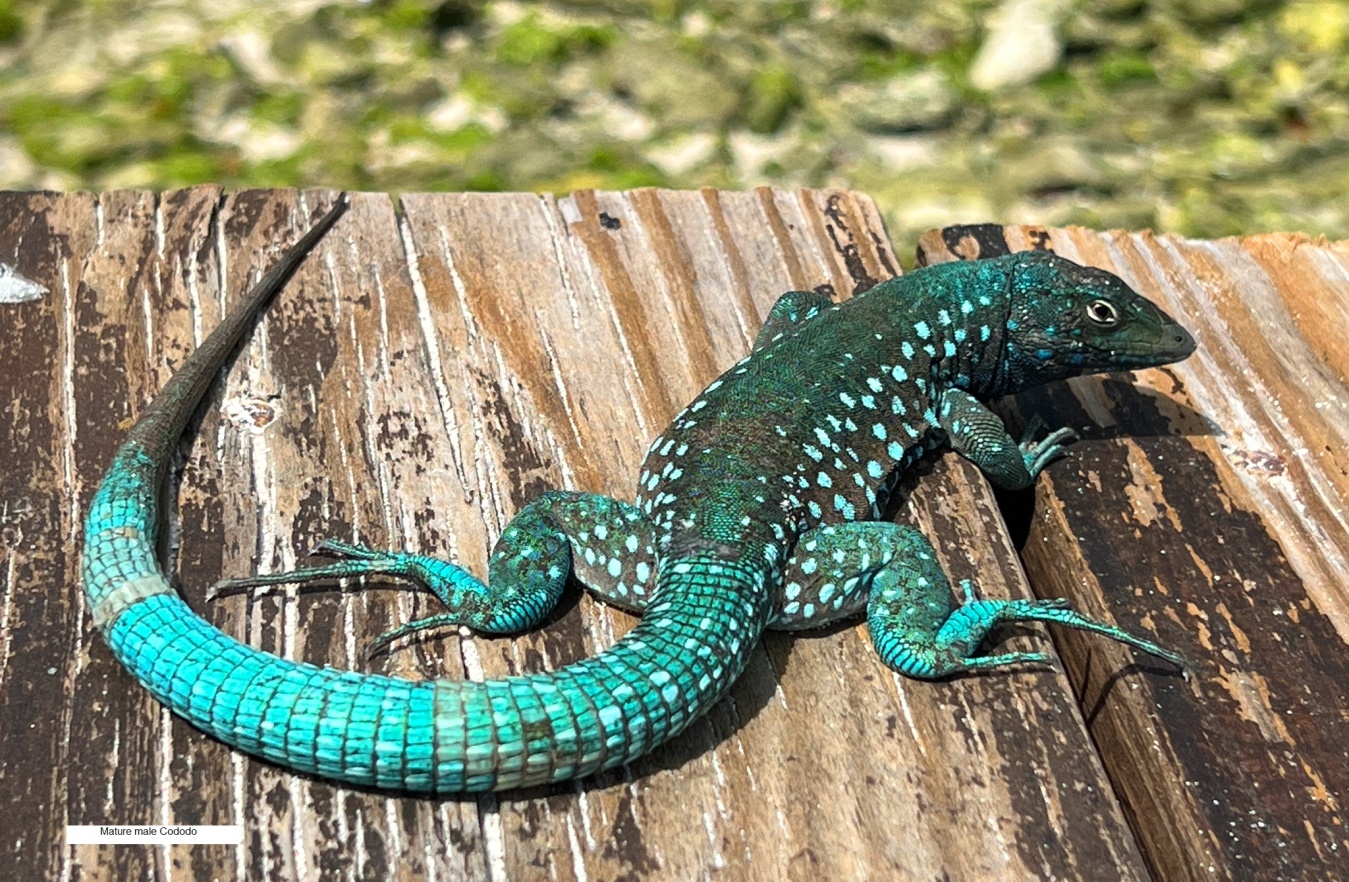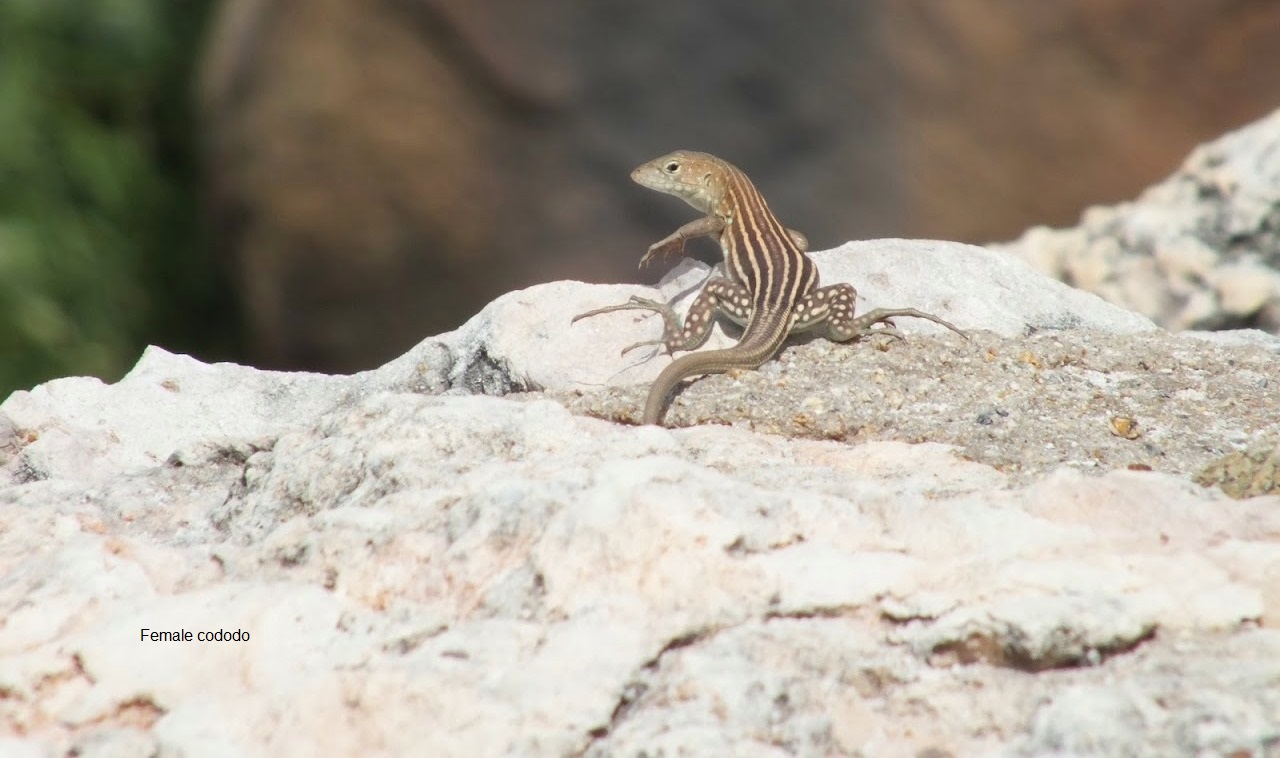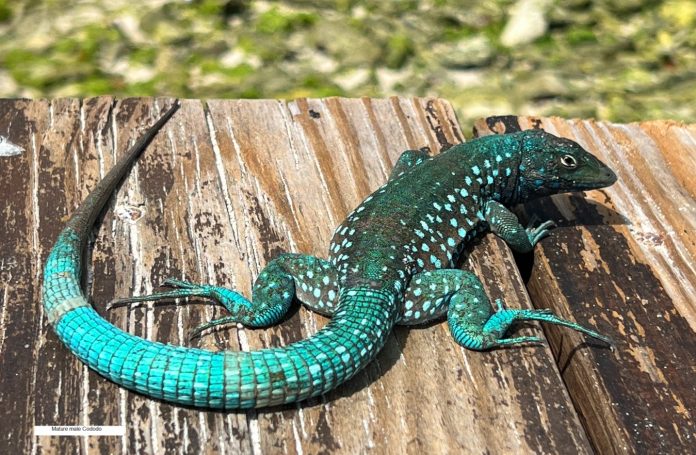Booking a magical glimpse inside Etnia Nativa
Article by Etnia Nativa call us 592 2702 and book your experience!
Every week, Etnia Nativa presents a new episode about culture and heritage, focusing on native knowledge, transcendental wisdom, and the importance of defending Aruba’s true identity. Its articles connect the reader with the mystical aspects of the island, its culture, and its traditional heritage, encouraging all to interact with our cultural environment by adopt an authentic island state of consciousness.
Today we share some details of the famous and only blue lizard on our island, known locally as cododo, and without a doubt, if you find it hanging around there, it will catch your attention. This lizard is known in English as Aruba’s Whiptail, is classified as Cnemidophorus arubensis, and is one of the different species that you can find on our island.

Female whiptail lizards and young lizards are known as “lagadishi,” or lizards in English. This endemic species is recognized as the most common and abundant species of lizard in Aruba. So, if you look carefully, as you walk through a garden, you will see some hanging around the flowers.
Cododo is considered beautiful for its light blue-spotted body and its turquoise tail, which cause great luminosity when it is in the sun. Females and young males are more discreet in terms of coloring. We can differentiate them because their bodies are light brown and have little blue spots. Notice that not only does the exposure to the sun make the cododo’s color shine, but the mating season also turns its coloration more vibrant. During the mating season, which occurs from September to October, the cododo’s blue color intensifies, covering a significant part of the body. They typically grow to about 6 inches (approx. 15 cm).
Aruba’s Whiptail (cododo) is highly adapted to an herbivorous diet. They like to consume flowers, nectar, leaves, and fruits, but occasionally they will catch a fly. However, they exhibit selectivity in plant consumption due to the presence of toxins in many available plant species. They often prefer fruit remains, which is usually followed by the excretion of the seeds in various places, helping the dispersion of the edible varieties for this species. Different studies in their natural surroundings have found that approximately 80% of the contents of the cododos stomach are made up of vegetable materials, 15% are made up of insects, and the remaining 5% are made up of feces, small pebbles, and twigs.

Cnemidophorus arubensis (cododo) reproduces through sexual reproduction. They have femoral pores, which are larger in males than in females, and produce a single large egg.
Something you should also know is that they are territorial animals, “and it is very common to see a cododo making signs with its front paw and curving its back, alerting intruders or the opponent that: “I am in charge of here.”
Now, if you want to learn everything about Aruba, book a visit to Etnia Nativa, a unique native gem where you will love Aruba beyond its beaches. In situ, you’ll be guided by our Island Insight acclaimed columnist, who will give you a lecture on the most interesting and revealing stories of the island. Undiscovered Etnia Nativa is an adventure beyond tourist traps. Experience a magnificent dwelling that integrates natural and reused materials, is bursting with culture and island heritage, and is overflowing with knowledge. Appointments and confirmations through WhatsApp +297 592 2702 etnianativa03@gmail.com

















